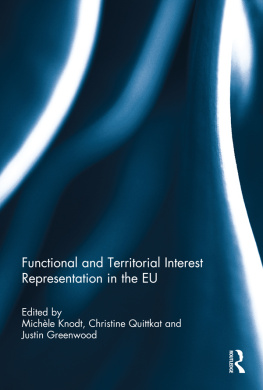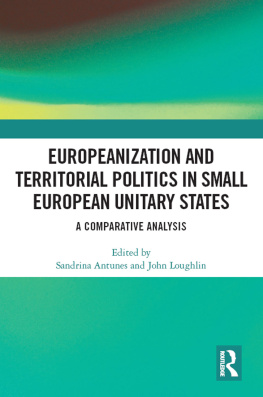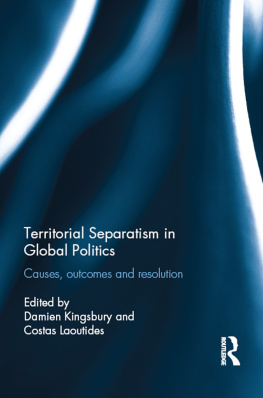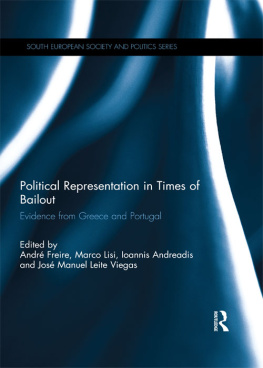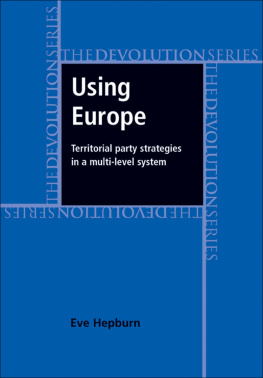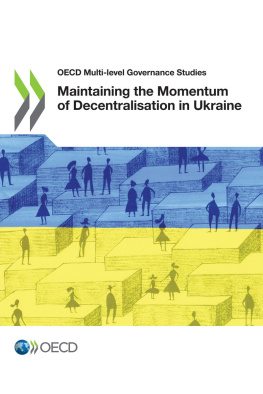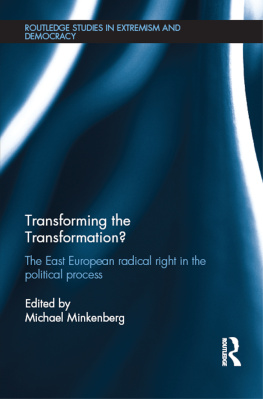Functional and Territorial Interest
Representation in the EU
Despite a substantial legacy of literature on EU interest representation, there is no systematic analysis available on whether a European model of interest representation in EU governance is detectable across functional, and territorial, categories of actors. Functional actors include associations for business interests, the professions, and trade unions, as well as NGOs and social movements; territorial based entities include public actors (such as regional and local government), as well as actors primarily organised at territorial level. What are the similarities and differences between territorial, and functional, based entities, and are the similarities greater than the differences? Are the differences sufficient to justify the use of different analytical tools? Are the differences within these categories more significant than those across them? Is there a professionalised European lobbying class across all actor types? Does national embeddedness make a difference? Which factors explain the success of actors to participate in European governance?
This book was originally published as a special issue of Journal of European Integration.
Michle Knodt is Jean Monnet Professor for European Integration and Comparative Politics at the Technical University Darmstadt, Germany.
Christine Quittkat is a Researcher at the Centre for European Social Research (MZES)/ University of Mannheim, Germany.
Justin Greenwood is Professor of European Public Policy at the Robert Gordon University, Aberdeen, UK, and a Visiting Professor at the College of Europe.
Functional and Territorial Interest
Representation in the EU
Edited by
Michle Knodt, Christine Quittkat
and Justin Greenwood

LONDON AND NEW YORK
First published 2012
by Routledge
2 Park Square, Milton Park, Abingdon, Oxon, OX14 4RN
Simultaneously published in the USA and Canada
by Routledge
711 Third Avenue, New York, NY 10017
Routledge is an imprint of the Taylor & Francis Group, an informa business
2012 Taylor & Francis
This book is a reproduction of the Journal of European Integration, vol. 33, issue 4. The Publisher requests to those authors who may be citing this book to state, also, the bibliographical details of the special issue on which the book was based.
All rights reserved. No part of this book may be reprinted or reproduced or utilised in any form or by any electronic, mechanical, or other means, now known or hereafter invented, including photocopying and recording, or in any information storage or retrieval system, without permission in writing from the publishers.
Trademark notice: Product or corporate names may be trademarks or registered trademarks, and are used only for identification and explanation without intent to infringe.
British Library Cataloguing in Publication Data
A catalogue record for this book is available from the British Library
ISBN13: 978-0-415-80992-4
Typeset in Times New Roman
by Taylor & Francis Books
Publisher's Note
The publisher would like to make readers aware that the chapters in this book are referred to as articles as they had been in the special issue. The publisher accepts responsibility for any inconsistencies that may have arisen in the course of preparing this volume for print.
Contents
Michle Knodt, Justin Greenwood & Christine Quittkat
Simona Piattoni
Holly Jarman
Christine Quittkat & Peter Kotzian
Michle Knodt
Justin Greenwood
Carlo Ruzza
Adam William Chalmers
Andrew Barron
Heiko Pleines
INTRODUCTION
Territorial and Functional Interest
Representation in EU Governance
MICHLE KNODT*, JUSTIN GREENWOOD**, & CHRISTINE
QUITTKAT***
*Technical University Darmstadt, Institut fr Politikwissenschaft, Darmstadt, Germany; **Robert Gordon University, Aberdeen, UK; ***Mannheim Centre for European Social Research (MZES), University of Mannheim, Mannheim, Germany
ABSTRACT This special issue starts from the assumption that, in contrast to the mainstream view, a convergence can be detected in strategies of interest representation across different actor types of functional and territorial interests, despite differences which remain. The question is posed here as to whether a European model of interest representation in European governance is detectable across categories of actors? It is assumed that the convergence over actor characteristics is due to the main characteristics of the European Union as an interactive and communicative system of multi-level governance which provides a special political opportunity structure to the different actors. The contributions of the issue compare territorial and functional interest representation regarding actor types, national embeddedness, policy field, and resources (financial and human resources, competences, capacity to act, learn and interact) with respect to the emergence of a highly complex European model of interest representation with cross-sectoral, intersectoral, and some intrasec-toral, characteristics.
Research on interest representation in EU governance has addressed different kinds of actors, different policies and focused on different levels, drawing upon a variety of conceptual approaches. Interest representation of business interests at the European level has accompanied the EU ever since the creation of the EEC and it has been at the focus of research ever since, although with varying perspectives and intensity. The years after the Single European Act were characterised by a significant increase of business interest groups, reflected in the studies of the EU (see, for instance, Mazey and Richardson 1993; Van Schendelen 1993; Greenwood 1997). Various state of the art comprehensive reviews substantiate this concentration on functional interest representation (Woll 2006; Coen 2007; Dr and De Bivre 2007; Beyers, Eising, and Mahoney 2008). These present in comprehensive detail various compilations of the different approaches and research questions in the analysis of EU functional interest intermediation. While drawing attention to business interest groups as well as social movements and NGOs, these issues did not set out to address the comparison of territorial and functional interest intermediation. The literature on territorial interest intermediation, with roots in the discourse on the Europe of the Regions in the mid 1980s was a lead factor which triggered EU mobilisation by sub-national territorial units, analysed by some large scale research projects on regional interest representation.1 A new political opportunity structure for organised territorial actors, alongside traditional outlets of business organisations and organised civil society, has emerged. These arose from EU funding related opportunities, the search in the 2001 White Paper on Governance for a participatory democracy outlet of democratic legitimacy, and the intensified assertion of territorial interests viz. member states since the 1990s. Also in this strand of literature there are volumes which mostly compare different regional interest representation within the EU (see for instance Knodt and Conzelmann 2002).
However, up to now a strict division between two communities can be detected, and in particular the territorial versus functional interest representation divide. Even though similar questions are addressed and the research focus has similar insights, the divide has continued with relatively little cross-reference. Even in those contributions where both functional and territorial interest intermediation is addressed (Balme and Chabanet 2008), the question of a systematical comparison of their interest intermediation strategies is not posed.

